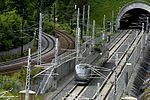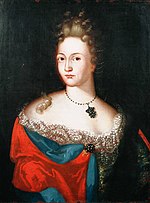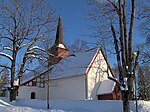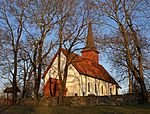Tanum Tunnel
Tanum Tunnel (Norwegian: Tanumtunnelen) is 3,590-meter-long (2.23 mi) double-track railway tunnel on the Asker Line, between Jong in Bærum and Åstad in Asker, Norway. It was built as part of the first stage of the Asker Line, between Asker and Sandvika; construction started in February 2002 and the tunnel opened on 27 August 2005. The tunnel was built by AF Gruppen for the Norwegian National Rail Administration. Most of the tunneling was conducted using the drilling and blasting method, although the easternmost 800 meters (2,600 ft) were built using the cut-and-cover method. After the tunnel opened, there have been problems with leaks damaging the superstructure. The tunnel has double track, is electrified and allows for a maximum speed of 160 kilometers per hour (100 mph). The cost to build the tunnel, excluding the superstructure, was 370 million Norwegian krone (NOK). The tunnel will accelerate intercity and regional traffic west of Oslo and free up capacity for the Oslo Commuter Rail on the Drammen Line.
Excerpt from the Wikipedia article Tanum Tunnel (License: CC BY-SA 3.0, Authors).Tanum Tunnel
Dragonveien, Asker
Geographical coordinates (GPS) Address Nearby Places Show on map
Geographical coordinates (GPS)
| Latitude | Longitude |
|---|---|
| N 59.8804 ° | E 10.4777 ° |
Address
Dragonveien 63
1396 Asker, Billingstad
Norway
Open on Google Maps





